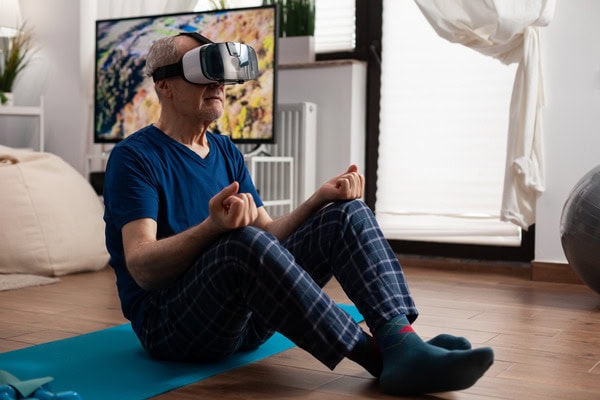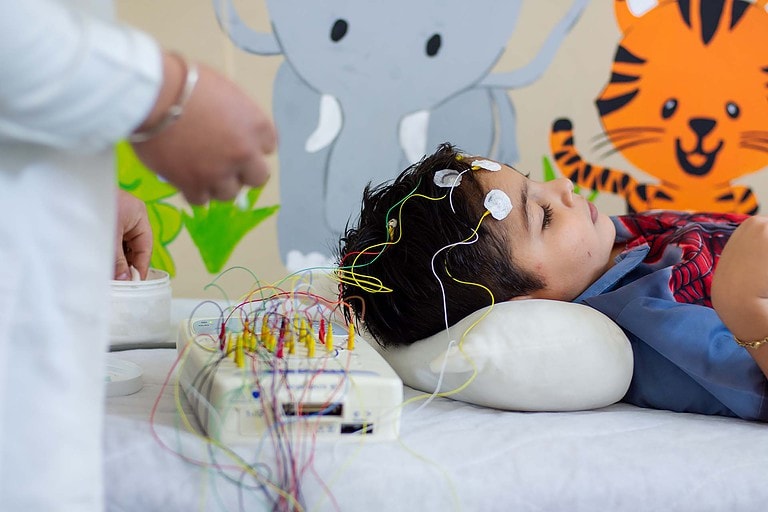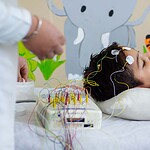Recent advances in virtual reality technology are transforming the landscape of cognitive rehabilitation for patients with neurological disorders. By creating immersive, controlled environments, virtual reality therapy offers unique opportunities for customized treatment protocols that engage patients in ways traditional therapies cannot. This article explores innovative applications of VR in healthcare settings, examining how these technologies enhance therapeutic outcomes while providing more engaging and effective rehabilitation experiences. From stroke recovery to traumatic brain injury treatment, VR-based interventions are demonstrating promising results in improving cognitive function and quality of life for patients facing neurological challenges.
Understanding the Potential of VR in Rehabilitation
Virtual reality represents a paradigm shift in cognitive rehabilitation by creating computer-generated environments that patients can interact with using specialized equipment. Unlike traditional therapy methods that often rely on repetitive exercises in clinical settings, VR transports patients to simulated worlds where they can perform tasks specifically designed to target their cognitive deficits while receiving immediate feedback. The immersive nature of virtual reality therapy creates several distinct advantages in neurological rehabilitation. First, it allows for precise control over stimuli, enabling therapists to gradually adjust difficulty levels based on patient progress. Second, VR environments can simulate real-world scenarios that would be impractical or unsafe to recreate in conventional therapy settings. Finally, the gamification elements often incorporated into VR programs can significantly increase patient motivation and adherence to treatment protocols – a crucial factor in rehabilitation success.
Neuroplasticity and VR-Enhanced Recovery
The science behind VR’s effectiveness in cognitive rehabilitation centres on neuroplasticity – the brain’s remarkable ability to reorganize itself by forming new neural connections. When patients engage with virtual environments that require specific cognitive functions, they effectively stimulate neural pathways related to those functions, potentially facilitating recovery or compensation for damaged areas. Research suggests that the multisensory stimulation provided by immersive VR may promote more extensive neural reorganization than traditional therapy methods. By simultaneously engaging visual, auditory, and proprioceptive systems in coordinated tasks, VR therapy activates multiple brain regions concurrently, potentially strengthening alternative neural pathways that can compensate for damaged areas.
Applications Across Neurological Disorders
Virtual reality applications have demonstrated effectiveness across a spectrum of neurological conditions, with protocols tailored to address specific cognitive impairments associated with different disorders.
Stroke survivors often face challenges with attention, memory, spatial awareness, and executive function. VR-based interventions offer targeted approaches to address these deficits through various simulated activities:
- Virtual navigation tasks that require patients to find their way through simulated environments, improving spatial cognition and memory
- Attention-training programs where patients must respond to specific stimuli while ignoring distractions in increasingly complex virtual settings
- Executive function exercises involving multistep problem-solving scenarios that mimic real-world challenges
Studies examining these approaches have shown promising results, with some patients demonstrating improvements in cognitive function that transfer to real-world activities. For example, stroke patients who practiced grocery shopping in virtual environments showed significant improvements in planning abilities and task completion in actual stores compared to those receiving only conventional therapy.
For traumatic brain injury (TBI) patients, virtual reality therapy provides structured cognitive challenges that can be precisely calibrated to match recovery stages. The technology has been particularly valuable in addressing the common post-TBI challenges of divided attention and cognitive fatigue. VR environments allow clinicians to safely expose TBI patients to gradually increasing cognitive loads, helping them rebuild attention capacity and develop compensatory strategies. Additionally, the immersive nature of VR can help patients with emotional regulation – another common challenge after brain injury – by creating controlled exposure to potentially stressful situations within a safe therapeutic context.
Measuring Effectiveness and Outcomes
As virtual reality in healthcare applications expands, researchers have developed increasingly sophisticated methods to evaluate its effectiveness. Beyond traditional neuropsychological assessments, new approaches include:
- Real-time monitoring of physiological responses during VR therapy sessions
- Analysis of movement patterns and response times within virtual environments
- Functional neuroimaging to observe brain activation patterns before and after VR intervention programs
According to Dr. Christian Beste, whose laboratory has pioneered methods for quantifying cognitive improvements following VR interventions, “The metrics we can gather from virtual reality therapy sessions provide unprecedented insight into cognitive recovery processes. Each interaction in the virtual environment generates data points that help us understand not just whether a patient is improving, but specifically how their cognitive strategies are evolving over time.”
Despite its promise, several challenges remain in implementing virtual reality therapy in mainstream rehabilitation settings. Technical issues such as motion sickness in some patients, the cost of high-quality VR equipment, and the need for specialized training for therapists all present obstacles to widespread adoption. Additionally, while evidence supporting VR effectiveness continues to grow, more large-scale clinical trials are needed to establish standardized protocols for different patient populations. The rapid evolution of VR technology itself presents another challenge, as research findings may quickly become outdated as new hardware and software capabilities emerge.
Future Directions and Innovations
The future of virtual reality in cognitive rehabilitation appears increasingly promising as technology advances and research expands. Christian Beste and colleagues point to many emerging trends that may further transform this therapeutic approach. Integration of artificial intelligence to create adaptive VR therapy programs that automatically adjust to patient performance represents one frontier. These systems could potentially deliver more personalized rehabilitation experiences without requiring constant therapist supervision. Another exciting development is the increasing accessibility of VR technology. As costs decrease and user-friendly systems proliferate, home-based VR rehabilitation programs may become feasible for many patients, extending therapy beyond clinical settings and increasing overall treatment intensity – a key factor in cognitive recovery.
Researchers are also exploring the integration of brain-computer interfaces with VR systems, potentially allowing patients with severe motor impairments to interact with virtual environments using neural signals alone. These neurofeedback-enhanced VR systems might open new possibilities for patients with combined cognitive and physical limitations. As these innovations continue to develop, virtual reality therapy stands poised to become an increasingly central component of comprehensive cognitive rehabilitation programs, offering patients with neurological disorders new pathways to recovery and improved quality of life.







